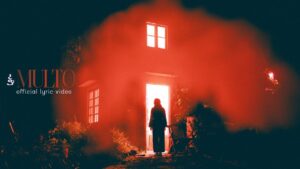Adeste Fideles Latin Lyrics – Christmas Songs Meaning & Facts by (Singles). you can watch this video youtube while the lyrics are written by John Francis Wade.The music track was released Date :November 15, 1751.
Step into the timeless beauty of Adeste Fideles a Latin Christmas carol that transcends centuries with its enchanting melody and heartfelt lyrics. Crafted by the talented John Francis Wade, this musical masterpiece has graced the festive season since its music release on November 15, 1751. Immerse yourself in the rich cultural tapestry as we explore the profound meaning and fascinating facts behind this cherished carol by (Singles). For an immersive experience, check out the captivating rendition available on YouTube, where the spirit of Christmas comes alive through the enduring magic of Adeste Fideles.
[Verse 1]
Adeste fideles
Laeti triumphantes
Venite, venite in Bethlehem;
Natum videte
Regem Angelorum
(Explanation Of Verse 1)
Embrace the call, believers, to join in jubilation within Bethlehem.” Adeste Fideles”, an invitation for “O Come, All Ye Faithful” in English, resonates with the joyous spirit. Bethlehem, the sacred town of Jesus’s birth, becomes the backdrop for a triumphant gathering, as the faithful joyfully converge to witness the arrival of the Angelic King.
[Chorus]
Venite adoremus
Venite adoremus
Venite adoremus
Dominum
[Verse 2]
Deum de Deo
Lumen de lumine
Gestant puellæ viscera
Deum verum
Genitum non factum
(Explanation Of Verse 2)
This verse illuminates the divine essence of Jesus.” Deum de Deo”, signifying God of God, and” Lumen de lumine,” expressing Light from Light, encapsulate the Christian belief in Jesus as the divine Son of God. The reference to “puellæ viscera” underscores the miraculous nature of the Incarnation, emphasizing the sacred significance of the Virgin Mary’s womb.
[Chorus]
Venite adoremus
Venite adoremus
Venite adoremus
Dominum
[Verse 3]
Cantet nunc io
Chorus angelorum;
Cantet nunc aula cælestium
Gloria, gloria
In excelsis Deo
(Explanation Of Verse 3)
This verse heralds a celestial symphony as angelic choirs resound with praises. Cantet nunc io, an invocation to “Sing, choirs of angels,” sets the stage for a heavenly jubilation. The celestial beings unite in joy, exalting and glorifying God with the resounding declaration of In excelsis Deo, echoing the sentiment of “Glory to God in the highest.”
[Chorus]
Venite adoremus
Venite adoremus
Venite adoremus
Dominum
[Verse 4]
Ergo qui natus
Die hodierna
Jesu, tibi sit gloria
Patris æterni
Verbum caro factum
(Explanation Of Verse 4)
In the closing verse, we recognize the profound importance of the day of Jesus’ birth. Ergo qui natus Die hodierna, translating to Therefore, born on this day, resounds with glory and praise to Jesus, acknowledging Him as the embodiment of the Word and offering reverence to the eternal Father.
[Chorus]
Venite adoremus
Venite adoremus
Venite adoremus
Dominum







